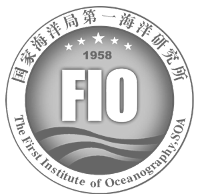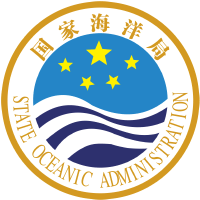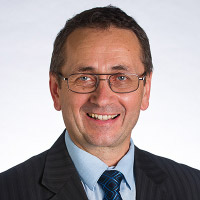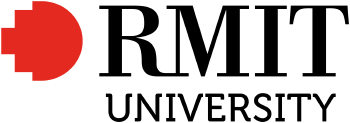Australia-China Centre for Maritime Engineering
About the Centre
The Australia-China Centre for Maritime Engineering is working to establish a new generation of metocean modelling in maritime engineering, wave-ocean forecasting and industry practice. The Centre will institute the international leadership of Australia and China in this discipline.
Aims and objectives
The Centre aims to initiate the next generation of wave models, wave–tide circulation coupled systems and ocean–atmosphere coupled models at the entire range of scales in air–sea interactions – from turbulence to climate. Progress in fundamental marine and engineering sciences, observational and numerical capabilities of the last decades makes the next breakthrough possible. The Australian and Chinese groups of the Centre possess complementary expertise; waves and air-sea interactions (Australia), and ocean and climate (China), with a track record of joint emphasis on wave-coupled effects in the ocean and lower atmosphere in which they are the world’s two leading groups.
Specific objectives include:
- Analytical research and direct (phase resolving) wave and ocean modelling, based on first principles
- New generation of spectral wave models, with fundamental physics replacing parametersations
- Coupling direct and spectral models to enable forecasting of individual extreme events rather than mean properties only
- Full coupling of wave and General Circulation Models (GCM), climate modelling based on holistic approaches
- Comprehensive experimental support of the modelling through field observations, satellite global ocean sensing and laboratory testing, combined with state-of-the-art probabilistic and statistical analyses
- Dedicated studies and developments for extreme oceanic conditions and poorly understood behaviours such as swell, wave–current interactions, and wave–ice interactions.
The conceptual framework of this proposal is a new strategic and united initiative, intended to change our views and approaches to the fundamental science of water/ocean waves and to the practical applications that involve wave and climate modelling or their statistical predictions.
These objectives will be broadly grouped into the following research themes:
- Analytical and direct modelling
- Spectral modelling
- Wave-GCM coupling
- Experiments and remote sensing
- Extreme conditions
Research
Analytic and direct modelling
Research leaders: Prof Tu (Australia) and Assoc Prof Song (China)
Phase resolving models have now reached the level when they can be explicitly used to conduct analytical studies of full three-dimensional nonlinear wave evolution, in their coupled interdependence on the boundary layer above and wave-mixed layer below. Our research leaders are co-authors of such applications and models. Main targeted deliverables are directional distributions of wind-to-wave energy input and wave-breaking dissipation; two-phase modelling of wave breaking.
Spectral modelling
Research leaders: Prof Yuan (China) and Prof Chalikov (Australia)
Spectral models used for the wave forecast, were a significant step forward when introduced in the 1980s to predict the mean wave height. A new generation of this model is feasible. Main targets include coupling of approximated direct wave models, such as the nonlinear Schrodinger equation to simulate individual rogue waves, into spectral models; replacing parametric source term for the wind energy input with the fluid mechanics module for the wind wave boundary layer, in order to predict air–sea fluxes to be utilised by GCMs.
Wave-GCM coupling
Research leaders: Prof Qiao (China) and Assoc Prof Toffoli (Australia)
Coupling waves with GCMs is a general move in the large-scale air-sea interaction community presently. Our researchers, on both the Australian and Chinese sides, were among the initiators of this trend and have significantly contributed to studies of the wave-coupled effects both on the atmospheric and oceanic sides. Within the Centre, main targets are coupling both teams’ wave-turbulence mixing and wave-induced current schemes into the selections of main GCMs; validation of the coupled schemes by means of hurricane modelling, and extending the effort to the climate change research.
Experiments and remote sensing
Research Leaders: Prof Young (Australia) and Prof Huang (China)
Ultimate validation of any model is always against observations, and numerical research outputs are always subject to verification against experiments. The Australian and Chinese groups have most extensive experimental and data processing expertise and access to the best laboratory, in situ and remote sensing facilities and data, many of them purposefully built and assembled. Main targets are laboratory, in situ and remote-sensing research of dynamics of nonlinear waves, air-sea interactions and upper ocean; specifically, subsurface kinematics of nonlinear waves, 3D structure of wave fields, wave-turbulence production below and above the interface and wave-ice interactions.
Extreme conditions
Prof Babanin (Australia) and Prof Dai (China)
There is mounting evidence that at extreme weather, regime of air-sea interactions changes in all the three environments: lower atmosphere, ocean interface and the upper ocean. Our Australian and Chinese teams, in collaboration with their industry partners, establish the first two field sites for closed measurements of the air-sea-wave cycle in tropical cyclones, in the Indian Ocean and South China Sea, respectively. The main targets of this research theme are comprehensive experimental and modelling research of extreme and other poorly understood oceanic conditions; specifically air–sea fluxes in tropical cyclones and other circumstances of extreme weather, wave–current interactions and swell propagation.
Australia
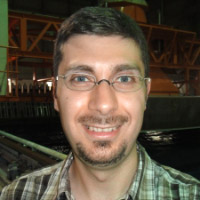
A/Prof Alessandro Toffoli
China
Prof Qiao Fangli
Co-Director
Joint responsibilities: Centre operation, strategic planning, external relations
Assoc Prof Song
Deputy Director
Responsibilities: Joint events (meetings, conferences, publications)
Prof Dai
Prof Huang
Prof Yuan
Partners
The Centre builds on an existing and enduring collaboration between the Department of Infrastructure Engineering, the Faculty of Engineering and Information Technology, the University of Melbourne, the First Institute of Oceanography and the former State Oceanic Administration.
